- Home
- Georgette Heyer
Jennifer Kloester Page 12
Jennifer Kloester Read online
Page 12
CONVIVIAL EVENINGS
For those sports enthusiasts in pursuit of an evening of merriment, sporting conversation and serious drinking, there was no better place to be than the Daffy Club at the Castle Tavern, Holborn. Owned by Tom Belcher, himself a respected pugilist and brother of the great boxer Jem Belcher, the Castle Tavern was the ideal venue for the sporting man. Here he could rub shoulders with the champions, take a glass of daffy with the patrons of the sport or try and get the inside running on a likely contender in a forthcoming match. Ferdy Fakenham in Friday’s Child was an enthusiastic patron of the Daffy Club and enjoyed getting drunk there. Belcher became landlord in 1814 and under his patronage the well-known boxing aficionado, referee and stakeholder, James Soares, set up the Daffy Club with the support of the Regency journalist and writer, Pierce Egan. Those admitted to the club met in a long room, decorated with pictures of famous fighters and other sporting subjects, and sat at a long table known as the ‘ring’. Every kind of sport was discussed by the ‘Daffies’ and although there were no written rules or formal meetings, high spirits were essential and drinking was the order of the day. The best time to go to the Daffy Club was the night before a big fight when Tom Belcher played host to a great party of enthusiasts and many famous retired fighters could be seen. This was the place to get the whisper on where the next day’s match was to be held and to get a look at the contenders. Every aspect of the match would be discussed, bets laid, odds shortened or lengthened and arrangements made for transport to the bout.
A great many boxers became innkeepers after their retirement, setting up ‘sporting houses’ throughout London and its environs, but the most famous of them all was Tom Cribb, the Champion of England in 1809, and renowned for his stunning defeats of the great American boxer, Tom Molyneux, in 1810 and 1811. Cribb’s first tavern was the Golden Lion in the Borough, but he soon moved to the King’s Arms on the corner of King and Duke Streets, St James’s. Here he established ‘Cribb’s Parlour’, a congenial gathering place for pugilists and the fancy alike, in which they could talk, smoke, drink and admire the Champion’s magnificent silver cup. Only those approved by the great Cribb himself could gain admittance to the Parlour and it was the aspiration of many a sporting buck to win the Champion’s approval. It was to Cribb’s Parlour that Charles Rivenhall was going when he met his sister Cecilia in The Grand Sophy and she teased him about what he would do there. Another popular destination with sporting young men, pets of the fancy and their noble patrons was Limmer’s Hotel on the corner of Conduit Street in Hanover Square. This was a more fashionable venue than either Cribb’s Parlour or the Castle Tavern and the hotel’s famous coffee-room still retained something of the atmosphere of the eighteenth-century coffee-house. It was at Limmer’s that Bertram Tallant went with his friend Mr Scunthorpe to meet and mingle with the Corinthians and the pets of the fancy, and where he met Mr Beaumaris and found himself telling the Nonpareil about his experiences and ambitions. Limmer’s was the place for pugilistic patrons and their stakeholders to meet, plan fights and discuss and organise the workings of the Fives Court. Here the names of promising young novices were put forward with requests for training by a retired champion or boxer of renown, and bets were laid on the likely outcome of a bout between an experienced pugilist and an up-and-coming challenger with little experience but plenty of ‘bottom’.
Another evening pleasure haunt favoured by the ton was the Royal Saloon located in Piccadilly. With its Turkish-style exterior and famous suppers of lobster and bucellas (Portuguese white wine) the Saloon drew large crowds from midnight till dawn. Here, members of the upper class ate in one of the booths or cavorted with the Cyprians and demireps against a painted backdrop of palm trees and eastern architecture. A popular haunt with gamblers, the Royal Saloon was lively, colourful and dissipated and the ideal place to meet with friends or to enjoy supper after an evening at the theatre or opera. Sherry in Friday’s Child was the life and soul of many a party at the Royal Saloon but was shocked when he found his young wife Hero there enjoying supper with several of his more outrageous friends.
AROUND THE TOWN
Bullock’s Museum in Piccadilly was enormously popular during the Regency and people flocked there to see its most famous exhibit of Napoleon’s travelling carriage.
In addition to the more adult entertainments available in the great metropolis, Regency London boasted a range of attractions to tempt visitors of all ages. One of the most popular of these was Bullock’s Museum located in Piccadilly and often referred to as the Egyptian Hall because of its striking architecture. William Bullock opened his museum in the spring of 1812, attracting large crowds to view the exhibits which included preserved elephants, rhinos and giraffes as well as other exotic animals, birds and fish, weapons, costumes, artefacts, shells and fossils. Kitty Charing in Cotillion visited the Egyptian Hall when Napoleon’s specially designed bulletproof travelling carriage (seized after the Battle of Waterloo) was put on display there, although neither she nor her distracted fiancé, Freddy Standen, were especially interested in the famous exhibit. In deference to Kitty’s fervent desire to see some of London’s most famous monuments, Freddy had already escorted her to several historic sites, of which only the Tower of London had really engaged his attention. Originally built by William the Conqueror in 1078 as part of the defence of the city, by the time of the Regency the Tower was a much larger edifice and offered visitors the chance to see Traitors’ Gate and the Bloody Tower, the crown jewels, the Horse Armoury and the record office with its vast collection of documents dating from the reign of King John. Kitty and Freddy particularly enjoyed the menagerie in the Lion Tower originally built by Edward IV. Visitors paid a shilling to enter the yard and were shown round by the keeper who could tell them about the caged beasts housed there. In 1805 these included several lions and lionesses, tigers, leopards, a panther, a wolf, raccoons and a hyena, many of which lived well into the Regency.
One of London’s most popular attractions during the Regency was Astley’s Amphitheatre, founded in 1767 by Philip Astley, a former sergeant-major of dragoons. Astley was a superb equestrian, with a flair for the dramatic and exciting, and his horsemanship and acrobatic riding led him to establish one of the early modern circuses. Spectacular shows such as Make Way for Liberty or the Flight of the Saracens drew large crowds to the amphitheatre near Westminster Bridge in Lambeth, and members of the upper class often took their children there. Sir Gareth Ludlow’s young nieces and nephews in Sprig Muslin thought him the best of uncles for taking them to Astley’s to see the troops of horses re-enacting scenes of war, the daring equestriennes performing extraordinary acrobatic feats on horseback and the famous equestrian ballet.
People of all ages enjoyed an evening at Astley’s Royal Amphitheatre.
An equally popular though somewhat more refined attraction enjoyed by the upper class was the annual exhibition of paintings at Somerset House. Completed in 1801, Somerset House was a magnificent building on the Strand with its front facing the river Thames. It was home to the Royal Academy of Arts, and each year in May the ton flocked to Somerset House for the Academy’s annual art exhibition in which nearly a thousand paintings were hung from floor to ceiling in the grand exhibition room. It was here that in Arabella, Lady Bridlington deliberately left Arabella alone with Mr Beaumaris on the pretext of finding and admiring Sir Thomas Lawrence’s latest painting.
It was considered de rigueur by many in the upper class to attend the
Royal Academy’s Annual Exhibition at Somerset House.
A less genteel pastime favoured by many in Regency society—and young men in particular—were the travelling peep-shows. These usually consisted of a perspective box in which were placed painted and artistically arranged figures set against a painted background. Using mirrors and artificial lighting they offered the viewer the novelty of peering through a small peep-hole in one corner of the box to see images of people in exotic locations or pastoral scenes. Wandering showmen c
arried them from town to town, setting up the boxes at local fairs or on a busy street and charging a penny per view. In Arabella, the heroine’s brother Bertram was delighted by the peep-show he had seen in Coventry Street. Peep-shows were also a popular attraction at Bartholomew Fair, the centuries-old carnival famous for its theatricals, sideshows, booths, gin stalls and fairings. Founded in 1133 during the reign of Henry I, the fair opened on St Bartholomew’s Day (24 August) and was held at Smithfield on the site of what eventually became the famous Smithfield meat market. It ran for three days and by the time of the Regency was enormously popular with the masses, although generally avoided by the well-bred and aristocratic who were well aware of the seamier side of what was sometimes referred to as the ‘British Saturnalia’.
In Friday’s Child, Hero was thrilled by the astonishing feats of Madame Giradelli,
the famous Fireproof Lady at Bartholomew Fair.
In Friday’s Child, Sherry was horrified to discover that his innocent young wife, Hero, had gone off to Bartholomew Fair with several of the more notorious members of the upper class. Well aware of the social stigma attached to being seen in such surroundings he rushed off to rescue her but then decided that it would be quite acceptable for him to escort Hero around the fair. Bartholomew Fair offered visitors a wide range of attractions including puppets, musicians, wire walkers, theatricals, prizefights, acrobats, wild animals, swings, roundabouts and even an early form of Ferris wheel. One of the most famous characters at the fair was the great theatrical showman, Richardson, whose fairground theatre was known as ‘Richardson’s Great Booth’. Sherry and Hero attended his production of the hair-raising melodrama The Hall of Death or Who’s the Murderer, with the renowned Mrs Carey in the lead role of Ducheza Rosanna Vinsenza. Besides theatricals, some of the most thrilling attractions at the fair were the sideshows which advertised all manner of strange and unusual exhibits and displays. Sherry and Hero, along with many other Regency visitors, were fascinated by the extraordinary Fireproof Lady, also known as Madame Giradelli, who could dip her limbs in boiling oil, boiling lead and nitric acid, bite on melted lead and touch red-hot iron to various parts of her body, all without any apparent ill effect. Patrons also flocked to see the Living Skeleton, Simon Paap the famous Dutch Dwarf (only 28 inches tall) and Toby, the learned pig who could count, tell time and answer questions put to him by members of the audience. Such was Bartholomew Fair’s reputation, however, that Sherry forbade his wife from telling anyone of their visit.
The Peerless Pond was another destination generally disdained by the upper class although it was often favoured by adventurous young men such as Jessamy and Felix Merriville in Frederica. Originally known as the ‘Perilous Pond’ because of the large number of drownings, the pool was a natural swimming hole which had been converted into England’s first open-air swimming pool in 1743. It was located on Old Street in Moorfields, and visitors could enjoy the spacious pool and its shady, sylvan setting, with all the amenities of dressing boxes, bowling green and library. Although it was not considered a genteel location, the pool was extremely popular with young men of all classes and casual swimmers could use the facilities for a shilling a time.
7
The Fashionable Resorts
BRIGHTON
George, Prince of Wales, first visited the seaside town of Brighthelmstone in 1783 when he was just twenty-one. Originally a fishing village, Brighton, as it came to be called, had been transformed into a fashionable resort in the mid-eighteenth century as a result of the work of Dr Richard Russell who had developed the ‘sea-water cure’ and created a vogue for swimming in and drinking the brine. In the late eighteenth century Brighton offered the Prince plenty of opportunity for merrymaking and, as he told Judith Taverner in Regency Buck, the town caught his fancy and he began making annual visits there to enjoy rides on the downs, shooting, gambling, the theatre, races and the company of his rakish uncle, the Duke of Cumberland. With a pair of fast horses, a racing curricle or phaeton and rapid changes en route, an accomplished driver such as the Prince could make the fifty-mile journey in less than five hours.
The Prince leased a farmhouse some 600 yards from the sea and in 1787 he commissioned the architect Henry Holland to convert it into a pavilion suitable as a summer residence. Because the Prince was renowned for his love of pleasure and high living, society naturally followed him to Brighton and discovered for themselves the delights of sea air and sea bathing. From the early nineteenth century onwards the haut ton rented houses along the newly built streets and squares of the town and dedicated themselves to the continual round of balls, card parties, assemblies and soirées held there during the Brighton season.
From its inception the Brighton Pavilion took up much of the Prince of Wales’s (later the Prince Regent’s) time and money, and what had begun as a simple transformation into a fairly modest domed house in 1787 had, by the end of Regency, turned into the fulfilment of John Nash’s vision of a kind of oriental palace. The final Pavilion boasted several main rooms on its ground floor, each of them magnificently decorated with a strong oriental influence. The Prince’s famous dinner parties and musical evenings brought the cream of society to his seaside palace and he entertained them lavishly in the five main rooms which ran along the eastern side of the building. The Music Room and the Yellow Drawing Room (now known as the Music Room Gallery) made up the northern wing, with the oval-shaped Saloon in the centre, and the Blue Drawing Room (originally the Green Drawing Room and now known as the Banqueting Room Gallery) and the Banqueting Room comprised the south wing, with the Great Kitchen built adjoining it, and a Pages’ or Table Deckers’ Room in between. It was to the Yellow Drawing Room that the Prince Regent invited Miss Taverner to give her a Petitot snuff-box in Regency Buck and it was there that he tried to kiss her.
Entry to the Pavilion was from the west side, through the Octagon Hall which led directly into the Entrance Hall—a square room decorated with serpents and dragons on pale green walls where Judith Taverner and her chaperone Mrs Scattergood left their shawls. From there guests could move into the Red Drawing Room on the south side of the Hall or straight ahead into the Long Gallery with its painted-glass ceiling and beautiful Chinese fretwork and decorations. The Long Gallery led directly into the Music Room at the southern end of the house or to the Banqueting Room at the northern end. The Prince Regent entered his private apartments, in the northwest corner of the Pavilion, from either the Entrance Hall or from the Long Gallery.
In Regency Buck, Judith Taverner was most impressed by the Brighton Pavilion,
which the Regent described to her as his ‘little summer palace’.
THE BEST ADDRESS AND OTHER ACCOMMODATIONS
Brighton was not a large town—even after the Prince Regent made it fashionable. For those of the upper class who usually took a house for the summer season or, like Sir Bonamy Ripple in False Colours, maintained a permanent residence there, the best address was Marine Parade, a broad boulevard running parallel to the sea. There, elegant houses lined the northern side of the street and, being built on land high above the water, commanded unencumbered views of the sea and beach. It was not uncommon for the male members of the upper class to set up a telescope in a first-floor window of their hired house as Perry did in Regency Buck and spend part of their leisure time ogling the women on the beach going in and out of the bathing boxes lined up beside the water. At the eastern end of the Parade stood Royal Crescent with its row of bow-fronted town houses built, in the early nineteenth century, by Mr Otto, an Indian nabob who had also seen fit to erect an oversize plaster statue of the Prince of Wales in the centre of the Crescent. For those who could not get a house on Marine Parade (or who preferred being at the centre of things like Evelyn Fancot in False Colours) the next best location was the Steine with its elegant promenade and close proximity to the shops and lending libraries. Although it could be noisy, the Steine was in the centre of town and had a view of the Pavilion. The most fashionable address in Brighto
n was of course the Pavilion, and the Regent often had friends to stay—although usually only for a few days and never for longer than a week.
Brighton’s two leading hotels, the Old Ship and the Castle Inn, were well established by the middle of the eighteenth century, but the advent of Dr Russell with his ‘miracle’ cure of sea bathing served to make them even more popular. As the main Brighton coaching terminus, the Old Ship was the final stop for visitors arriving in the town and was within easy walking distance of the main street and the Pavilion. During the Regency it was customary for the Prince to be informed, on a daily basis, of new arrivals at the Old Ship so that those deemed suitable could be added to the list of guests to be invited to the Pavilion. In Friday’s Child, Gil Ringwood suggested that Sherry and Hero take their honeymoon in Brighton because Hero would enjoy the balls at the Castle Inn and going to the Pavilion to meet the Regent. The Castle Inn was located on the north-east corner of Castle Square between the Pavilion and the Steine. As the Pavilion grew, so did the need for land, and both the Castle Inn’s land and the building itself were eventually absorbed into the Pavilion site; the inn was torn down in 1823 and the old assembly room was converted into a private chapel for the King.

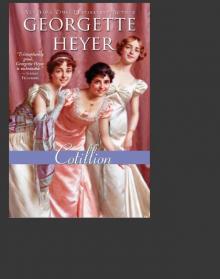 Cotillion
Cotillion Frederica
Frederica The Black Moth: A Romance of the XVIIIth Century
The Black Moth: A Romance of the XVIIIth Century Lady of Quality
Lady of Quality Snowdrift and Other Stories
Snowdrift and Other Stories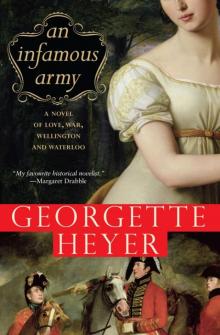 An Infamous Army
An Infamous Army The Talisman Ring
The Talisman Ring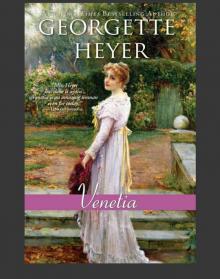 Venetia
Venetia The Quiet Gentleman
The Quiet Gentleman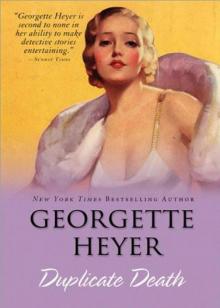 Duplicate Death
Duplicate Death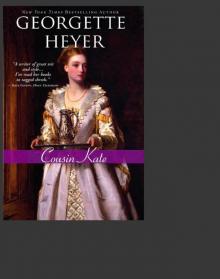 Cousin Kate
Cousin Kate Black Sheep
Black Sheep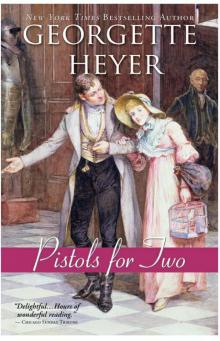 Pistols for Two
Pistols for Two Sprig Muslin
Sprig Muslin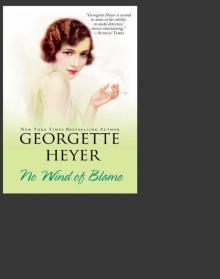 No Wind of Blame
No Wind of Blame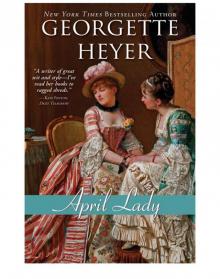 April Lady
April Lady False Colours
False Colours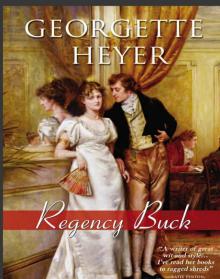 Regency Buck
Regency Buck The Toll-Gate
The Toll-Gate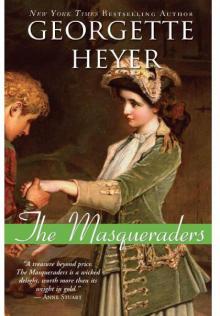 The Masqueraders
The Masqueraders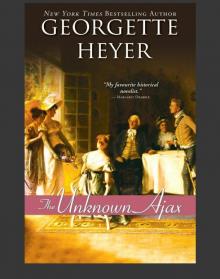 The Unknown Ajax
The Unknown Ajax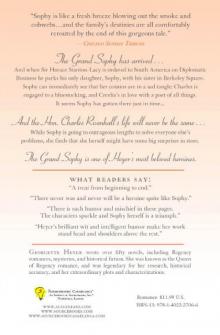 The Grand Sophy
The Grand Sophy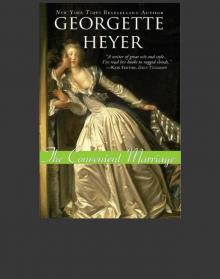 The Convenient Marriage
The Convenient Marriage Faro's Daughter
Faro's Daughter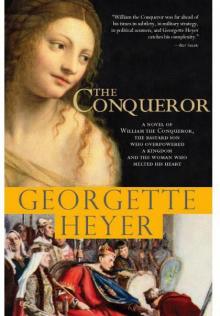 The Conqueror
The Conqueror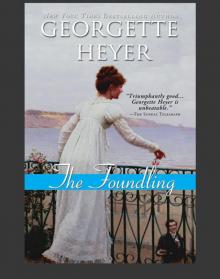 The Foundling
The Foundling The Black Moth
The Black Moth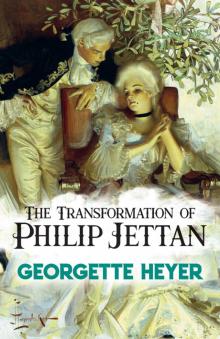 The Transformation of Philip Jettan
The Transformation of Philip Jettan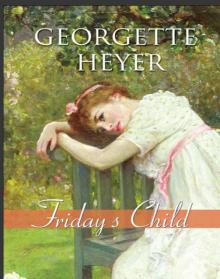 Friday's Child
Friday's Child Beauvallet
Beauvallet They Found Him Dead
They Found Him Dead Charity Girl
Charity Girl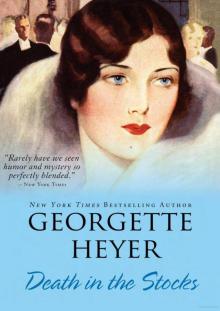 Death in the Stocks: Merely Murder
Death in the Stocks: Merely Murder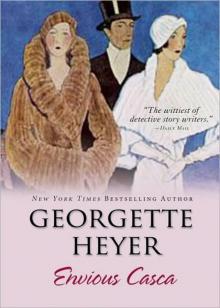 Envious Casca
Envious Casca Behold, Here's Poison
Behold, Here's Poison Arabella
Arabella The Nonesuch
The Nonesuch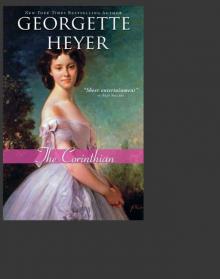 The Corinthian
The Corinthian Jennifer Kloester
Jennifer Kloester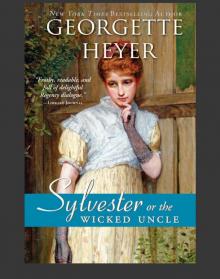 Sylvester
Sylvester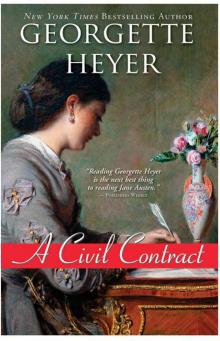 A Civil Contract
A Civil Contract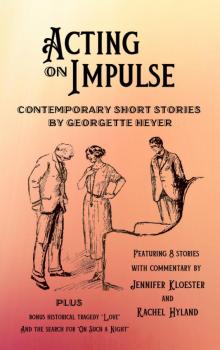 Acting on Impulse
Acting on Impulse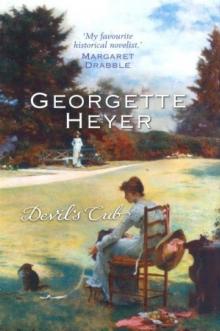 Devil’s Cub at-2
Devil’s Cub at-2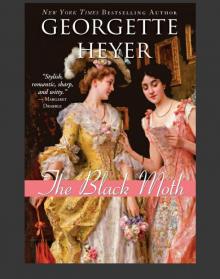 Black Moth
Black Moth Grand Sophy
Grand Sophy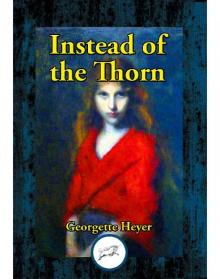 Instead of the Thorn
Instead of the Thorn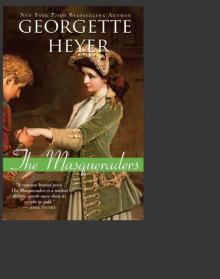 Masqueraders
Masqueraders Corinthian
Corinthian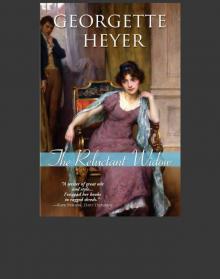 Reluctant Widow
Reluctant Widow